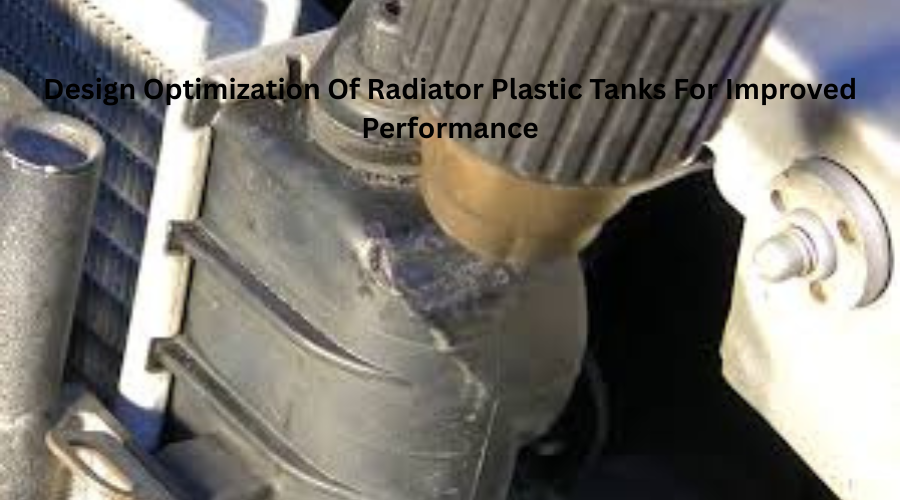Everything You Need To Know About Auto Radiator Plastic Tanks
- linghangtechnology
- Feb 26
- 4 min read

Your vehicle's cooling system plays an essential function in maintaining engine efficiency and preventing overheating. At the heart of this system is the high quality auto radiator plastic tank, a key component responsible for storing and circulating coolant. Whether you're looking to replace your radiator tank or simply want to understand how it works, this comprehensive guide will provide you with all the information you need.
What Is Plastic Tank For Auto Radiators?
Plastic tank for auto radiator is a lightweight yet durable reservoir that holds coolant as it flows through the radiator to regulate engine temperature. Unlike traditional metal tanks, plastic tanks are widely used due to their cost-effectiveness, resistance to corrosion, and ability to withstand high temperatures. They are typically made from high-strength plastics such as polypropylene or glass-reinforced nylon, ensuring longevity and reliability.
How Does Plastic Tank For Auto Radiators Work?
The primary function of the radiator plastic tank is to hold coolant that is continuously circulated between the radiator and engine block. Here's a step-by-step breakdown of how it works:
Coolant Storage: The plastic tank stores excess coolant, preventing overheating or freezing of the engine.
Heat Exchange Process: As the engine runs, it generates heat. The coolant absorbs this heat and transfers it to the radiator, where it is cooled before re-entering the engine.
Pressure Regulation: The tank helps maintain optimal coolant pressure, allowing the system to function efficiently.
Expansion and Contraction: The coolant expands and contracts with temperature changes, and the plastic tank accommodates this fluctuation without leakage.
Benefits of Using a Plastic Tank for Auto Radiators
Using radiator plastic tank provides multiple benefits, making it the ideal selection for modern vehicles. Some of the key benefits include:
1. Lightweight and Efficient
Compared to metal tanks, plastic radiator tanks are much lighter, which contributes to overall vehicle fuel efficiency and performance.
2. Corrosion Resistance
Unlike aluminum or copper, plastic tanks do not rust, ensuring long-term durability and reducing the need for frequent replacements.
3. Cost-Effective Solution
Manufacturing plastic tanks is more affordable than metal alternatives, making them a cost-effective choice for both vehicle manufacturers and owners.
4. Heat and Pressure Resistance
Modern plastic tanks are engineered to withstand extreme temperatures and pressures, making them highly reliable in various driving conditions.

5. Easy Replacement and Repair
Since plastic radiator tanks are designed to be modular, they can be replaced separately without needing to change the entire radiator, saving on repair costs.
Common Issues with Plastic Tank For Auto Radiators and How to Fix Them
While radiator plastic tanks are durable and long-lasting, they are still prone to certain issues over time. Below are some common problems and their solutions:
1. Cracks and Leaks
Over time, plastic can become fragile due to constant exposure to heat and coolant chemicals. If you notice coolant leaks, it may be due to a cracked plastic tank.
Solution: Small cracks can be temporarily repaired using epoxy sealants, but for a permanent fix, replacing the tank is the best option.
2. Overheating Issues
A failing radiator tank can cause inefficient coolant circulation, leading to engine overheating.
Solution: Regularly inspect the coolant levels and tank condition. If you find visible damage, replacing the tank will restore optimal performance.
3. Tank Discoloration and Warping
Extreme temperatures can cause plastic tanks to become discolored or warped, affecting their ability to seal properly.
Solution: If warping occurs, it's best to replace the tank with a high-quality auto radiator plastic tank to ensure reliability.
How to Choose the Right Plastic Tank For Auto Radiators
When selecting a replacement radiator tank, it's essential to consider several important aspects to ensure compatibility and longevity.
1. Vehicle Compatibility
Always check whether the plastic tank fits your specific vehicle's make and model. Manufacturers often design tanks to meet the exact specifications of different radiators.
2. Material Quality
Opt for tanks made from heat-resistant, reinforced plastic that can withstand constant contact with high temperatures and coolant chemicals.
3. Pressure Rating
Ensure that the tank's pressure rating matches your vehicle's cooling system requirements. Using a tank with an incorrect pressure rating can lead to system failures.
4. Manufacturer Reputation
Select a reliable manufacturer that provides high-quality products and warranty coverage for added peace of mind.
FAQs
1. How long do plastic radiator tanks last?
Plastic radiator tanks typically last 5 to 10 years, depending on driving conditions, maintenance, and coolant quality.
2. Can I replace just the plastic tank instead of the entire radiator?
Yes, in many cases, the plastic tank can be replaced separately, saving you money compared to replacing the entire radiator.
3. How can I prevent my radiator plastic tank from cracking?
Regular coolant maintenance, avoiding overheating, and inspecting for wear and tear can help increase the durability of your plastic radiator tank.
4. Are plastic radiator tanks better than metal ones?
While metal tanks are more durable, plastic tanks are lighter, more affordable, and corrosion-resistant, making them a popular choice in modern vehicles.
5. What should I do if my plastic radiator tank leaks?
If you notice a small crack, you can use a sealant as a temporary fix, but replacing the tank is the best long-term solution.
Conclusion
The radiator plastic tank is a critical component in keeping your vehicle's cooling system running efficiently. Choosing a radiator plastic tank ensures peak efficiency, durability, and resistance to wear and tear. By understanding how these tanks work, their benefits, and typical challenges, you can make a knowledgeable selection when replacing or maintaining your vehicle's radiator system. Routine upkeep and early identification of issues will extend the life of your radiator tank and prevent costly repairs down the road.






Comments